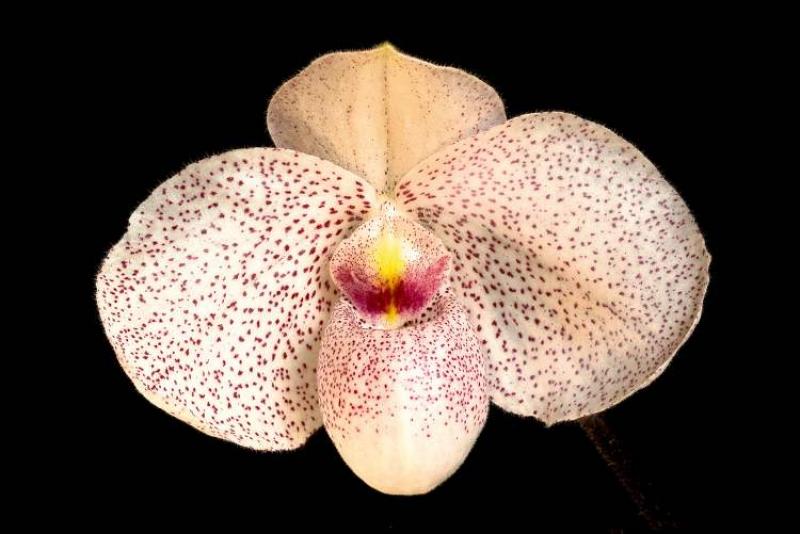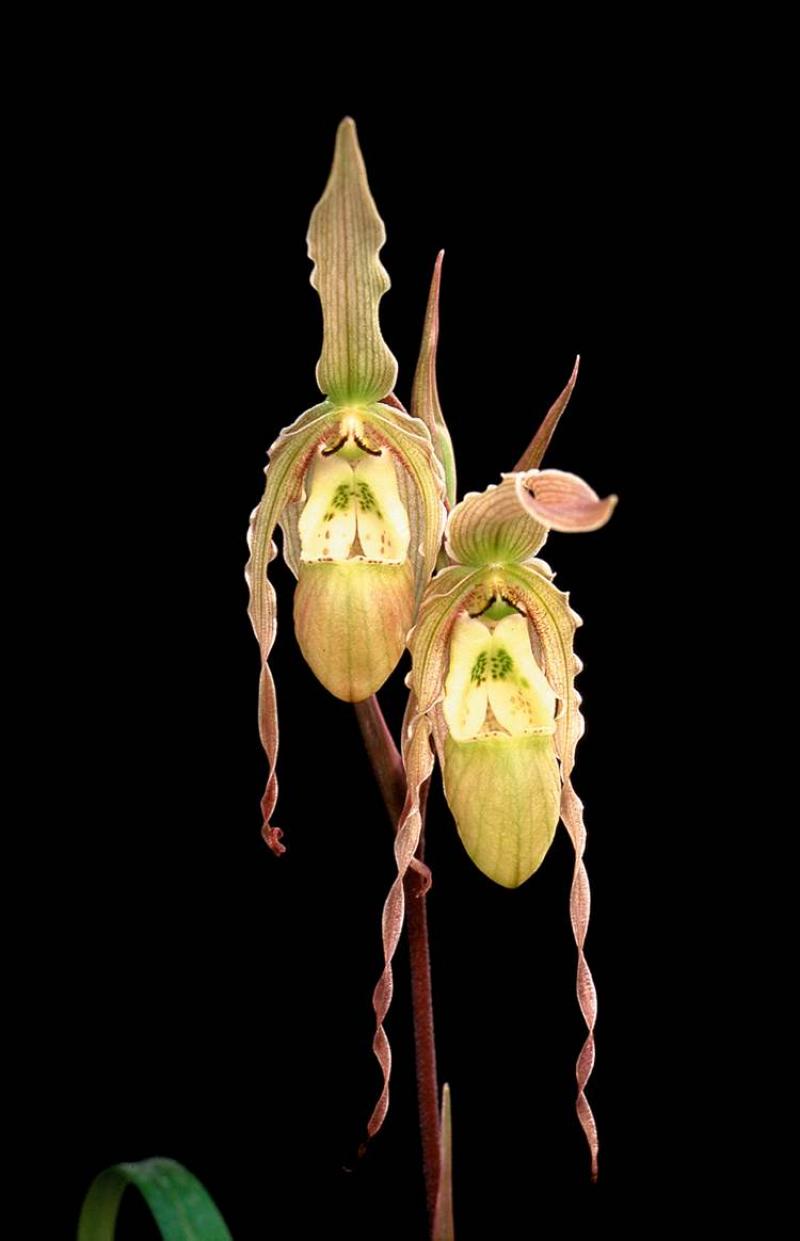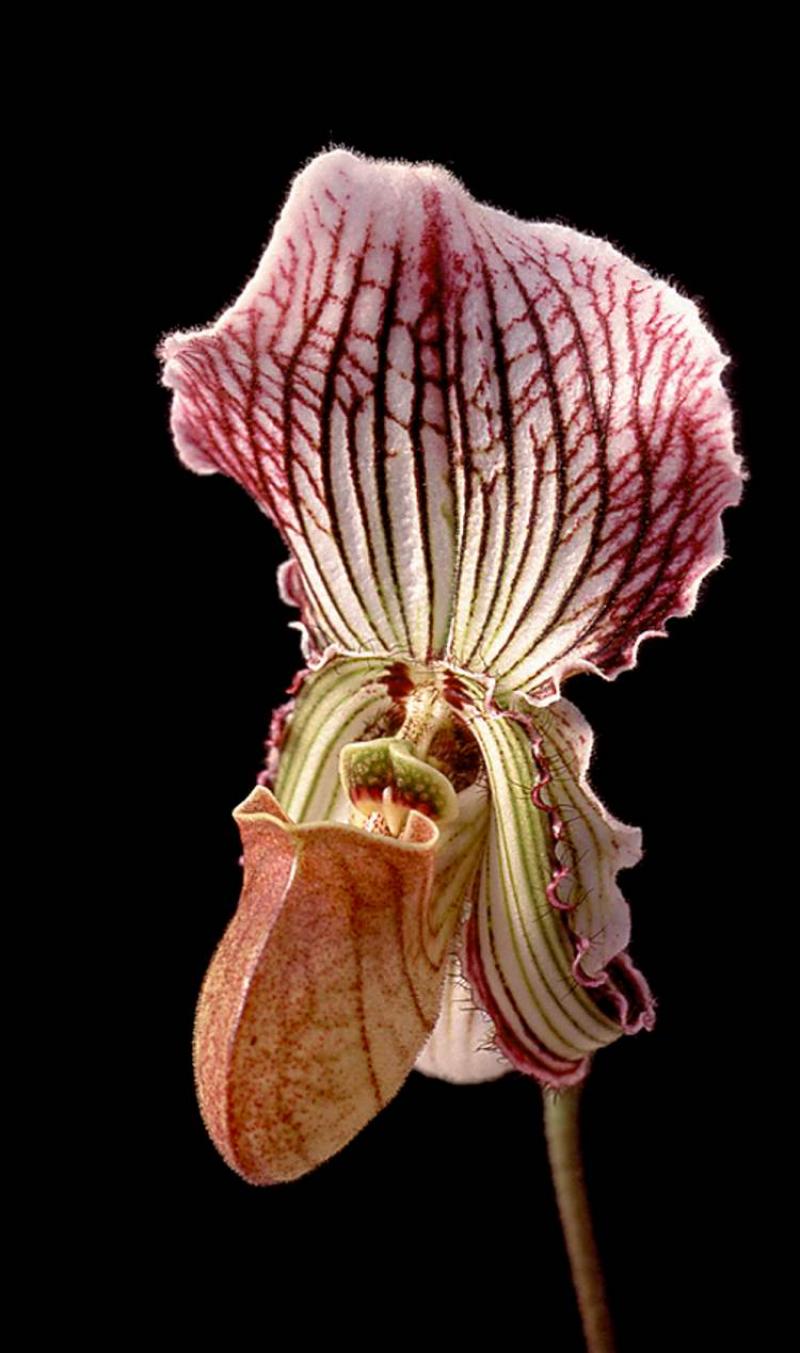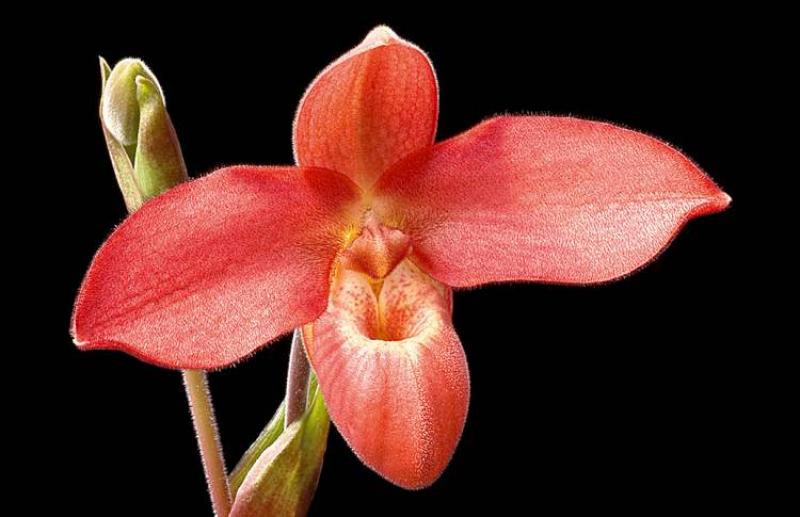




There is something about orchids that has enthralled the human race for over 150 years. The words "mysterious... captivating... beautiful..." are just a few of the adjectives most often used in describing orchids.
Of the more than 20,000 different orchid species, the three slipper orchid genera, with their prominent lip and distinctive dorsal sepal, are the most fascinating and well-known. Widely distributed throughout all continents except Antartica, phragmipediums flourish in South America, paphiopedilums in Southeast Asia and cypripediums in the temperate regions.
Fortunately for those who enjoy growing orchids, phragmipediums and paphiopedilums are relatively easy to grow in a home environment. The Manitoba Orchid Society Annual Orchid Show, held in March of each year, features a number of orchid vendors that specialize in slipper orchids. Several of our local garden centres offer slipper orchids for sale as well.
The choices within these two genera ensure there is something for everyone -- from vigorous, tall flowering species that require a great deal of space, to small species that easily fit on a windowsill. In addition to the species, a vast array of man made hybrids have been developed. These come in all shapes, sizes and colours. Hybrids are often less difficult to grow and are recommended as the first consideration for the neophyte.
Phragmipediums love moisture. In their native mountainous environment they thrive in wet seeps, on the banks of streams and even perched on boulders in fast-flowing streams. The roots of the plants penetrate these moist environments and readily absorb organic and mineral nutrition that has been leached from the soil. Light is intense, with some shading provided by the grasses and shrubs growing alongside these orchids.
How to grow at home
To grow phragmipediums, two very different methods can be used. The traditional method uses coconut fibre or fir bark with added sponge rock and charcoal.
Both coconut fibre and fir bark should be soaked for several days prior to preparing a potting media. This soaking removes residual salts in the coconut fibre and ensures the fir bark is well-moistened.
Fertilize the plants once a week, at one-quarter of the recommended strength, watering the plants generously. After watering, let the pot drain and place it in a saucer of clear water, maintaining water in the saucer at all times. Once a month, flush the pots with clear water in order to remove any buildup of salts left by the fertilizer.
The other method uses expanded clay pellets in a semi-hydroponic system. These clay pellets are available at hydroponic shops and select hardware stores or garden centres. The key to success with this method is the maintenance of a reservoir of water at the base of the pot, ensuring a constantly moist media. Specifically designed semi-hydroponic pots are available -- or use a clear plastic container with four six-millimetre holes spaced equally around the pot two centimetres above the bottom of the pot. A soldering iron or an electric drill can be used to make these holes.
Prior to use, soak the clay pellets well. Place the plant in the pot and distribute the clay pellets around the roots to within 2 cm of the rim. Water once a week using a hydroponic fertilizer at the recommended strength. Flush the pot with clear water at every third watering.
Optimum light for phragmipediums is an east or south window with light shade in summer and no shade in winter. Fluorescent lights work well, with the top of the plant 10 to 15 cm from the lights. Ensure the flowering spike does not touch the lights.
Paphiopedilums grow in well-drained organic material, or on rock outcroppings within tropical forests. At least one species grows as an epiphyte (i.e. does not root in the soil but rather grows on another living plant, in this case, on trees). Seasonal rains provide the moisture, or in dry seasons, heavy fogs or residual moisture in the soil. Light is often filtered by branches overhead, although several species may receive direct light.
The most popular growing medium for paphiopedilums is a fir bark, sponge rock, charcoal mix. For small plants and seedlings, a mix of small fir bark, with perlite, fine charcoal and finely chopped sphagnum is recommended.
For medium to large plants, a mix of a medium fir bark with sponge rock and medium charcoal is recommended. For extra-large plants, a large-sized fir bark may be used. Pieces of broken clay pots, small pieces of styrofoam or large bark placed in the bottom of the pot will provide additional drainage. Water the plants once a week using an orchid fertilizer at one-quarter of the recommended strength. Plants growing in a seedling mix should be repotted approximately every six months. Those plants in medium or large bark should be repotted yearly.
In Manitoba, we are fortunate to have seven different species of native cypripediums. These orchids require very specific growing conditions that exist only in their natural habitat. Cypripediums are not suitable for indoor culture.
Farming, forestry, wetland drainage and cottage development have all contributed to a loss of habitat for these orchids and an associated decline in numbers. Please enjoy these fascinating plants where you find them. "Take only photographs, leave only footprints."
To learn more about growing orchids, you are invited to join the Manitoba Orchid Society. Meetings are held at 2 p.m. every third Sunday of the month at the Canadian Mennonite University, 600 Shaftsbury Blvd.
------------------------------------------------------------------------------------------------------
What's in a name?
PLANTS have both botanical names and common names. The botanical names are in Latin and consist of two words: The first word is the genus and the second word refers to the species. While many gardeners may refer to a plant by its Latin name, the common name is much easier to pronounce and generally, more readily known. Orchids, however, are primarily known by their complex scientific names and this is because they have only gained prominence in the gardening world in the last 150 years.
Orchid discoveries continue to make international news, most recently at Minnesota's Annual Orchid Show when a new orchid, Phragmipedium kovachii, discovered in Peru in 2003, was displayed with great fanfare. This exotic and rare orchid (20-centimetre-wide bloom) is known as a lady's slipper or slipper orchid and may be available to home gardeners in the future. Today's guest writer, Lorne Heshka, past-president of the Manitoba Orchid Society, shares tips on how to grow the more readily available species of orchids at home, including slipper orchids.
-- -- --
The Manitoba Orchid Society presents the 2012 Annual Orchid Show & Sale at the Assiniboine Park Conservatory, 9 a.m. Friday, March 23 to 4:30 p.m. Sunday, March 25. For more details, visit www.manitobaorchidsociety.ca
colleen.zacharias@gardensmanitoba.com




